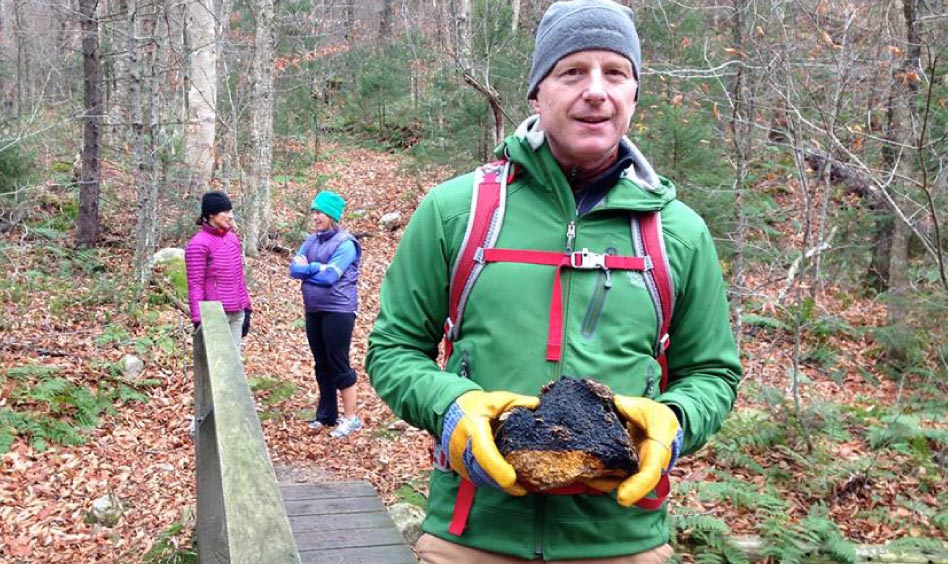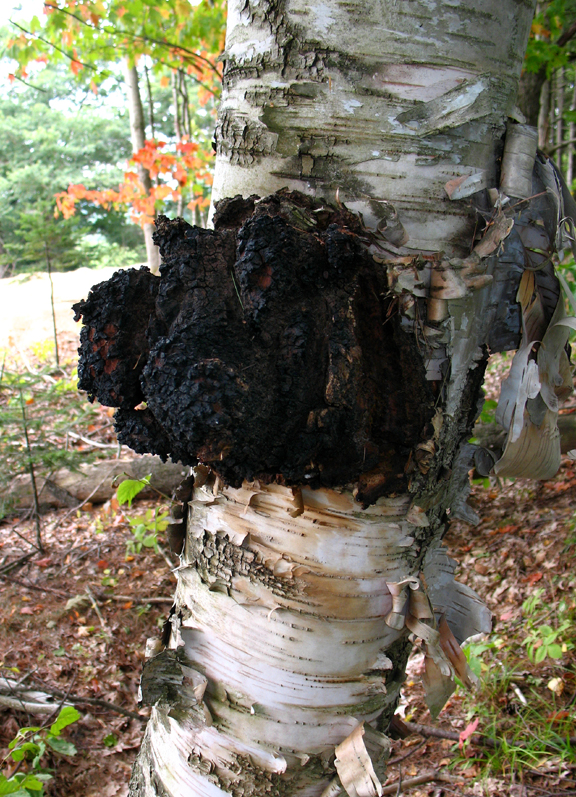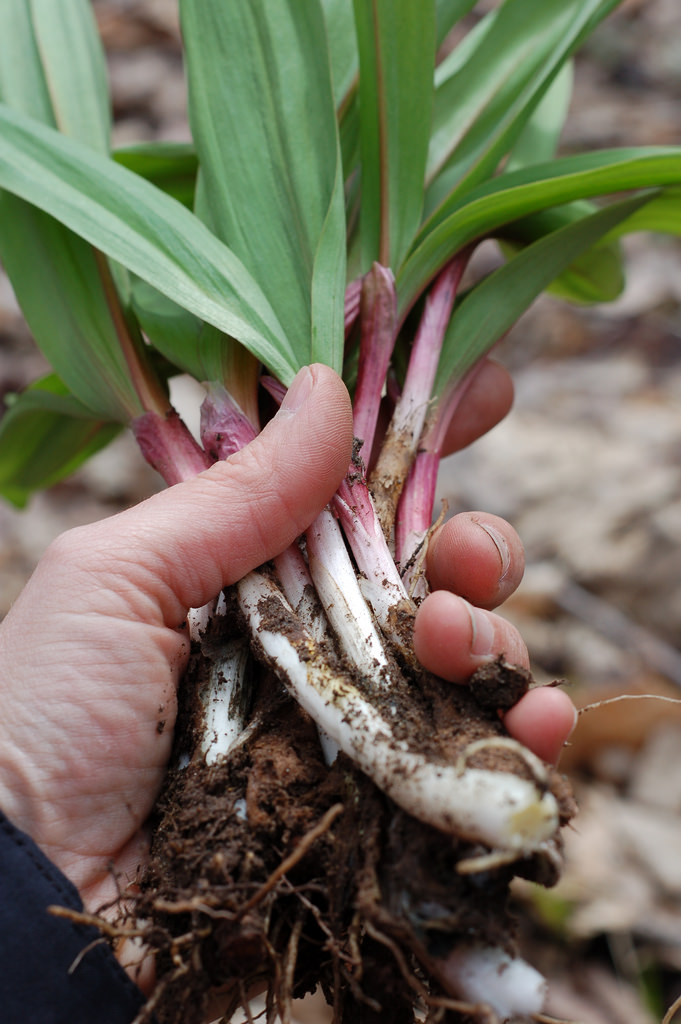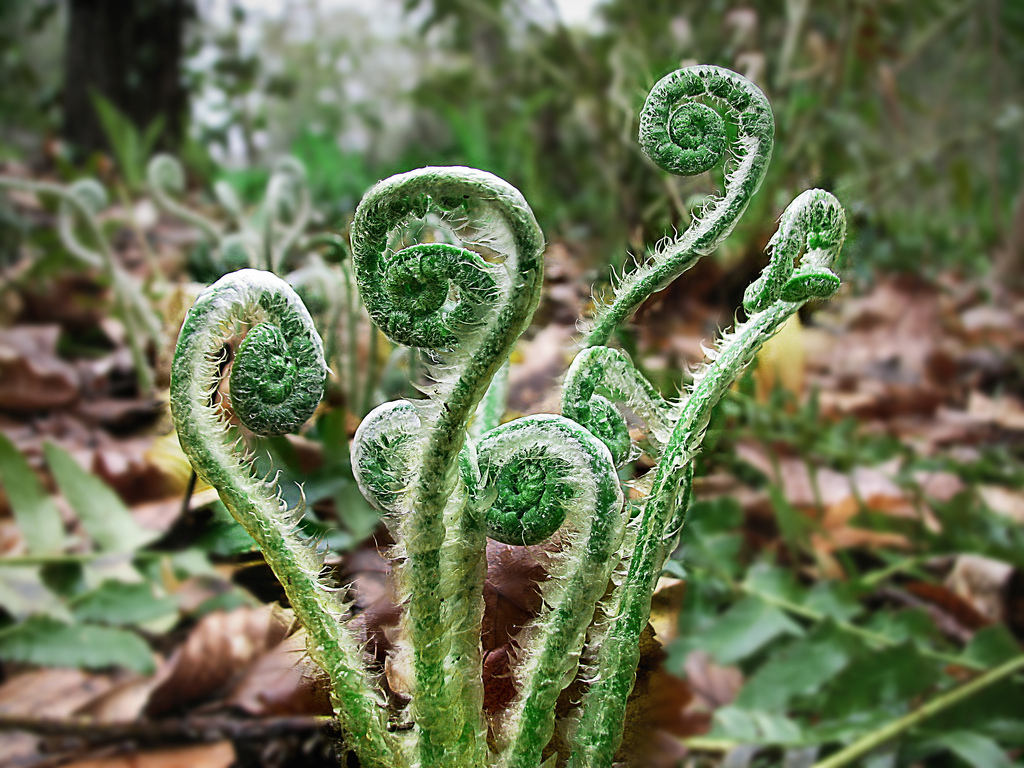
Author Peter Merrill with chaga.
Foraging for fresh food is a common Vermont pastime once the snow is gone. Just when it seems like spring won’t come at all, it arrives in a rush here in Vermont, as steel-gray skies and damp days give way to an explosion of green. Hope springs eternal as we pour through seed catalogs, map out our gardens, and tend our seedlings, all the while dreaming of the bountiful harvest to come. Unfortunately, by mid-July this dream all too often becomes a nightmare, as we realize that we are no match for the late, killing frosts, drowning rains, and interminable weeds that annually conspire to derail our gardening plans.
That’s what I love about foraging—no planning, no planting—just that moment of surprise and the instant gratification of finding something in the woods that you can actually eat. Just the other day I was weeding my blueberry bushes and came across a beautiful morel mushroom. Morels come only in May, and then they’re gone, which make them even more highly prized. I spent an hour crawling around my garden on hands and knees looking for more and found one other, just enough to sauté and savor.
Foraging for fresh food brings me back to my youth and fond memories of birthday party treasure hunts and looking for Easter eggs. At a recent mushrooming class I attended, the instructor gave each of us a bag and sent us into the woods to gather as many different mushrooms as we could find. Picture two dozen people fanning out in all directions, bags in hand, many in their 60s and 70s, and you will understand how foraging can become a passion for children of all ages and a skill that is passed from generation to generation.
Sisler Builders’ Randy Pratt remembers his mother’s passion for mushrooming and honors her memory in the naming of his dogs, Shiitake and Chanterelle. Upon learning of my own interest in mushrooming, a 90-year-old friend recently bequeathed me his late wife’s extensive library of mushrooming books simply because he felt they would be more useful in my woods than on his bookshelf.
Anyone who knows Sisler Builders carpenter Shannon Kinneson knows he’s a man of few words—unless you get him talking about hunting or mushrooming. I can remember showing Shannon a bright yellow mushroom that I had proudly misidentified as a chanterelle. The next day a plain brown bag filled with freshly picked chanterelles showed up in my mailbox, no note, no explanation. Shannon has also helped me to find and identify chaga, a woody fungus that grows on birch trees; looks like burnt charcoal, and can be steeped to make a tasty and therapeutic tea.

Chaga on birch tree.
Sisler Builders master woodworkers, Seth Allen and Glen Waller, are also chaga fans and often have a fresh pot of tea brewing on the woodstove in the Sisler Builders woodworking shop on cold winter mornings.
Perhaps the best part about foraging for fresh food is it helps to extend our short Vermont growing season. Where I live, ramps (wild leeks) begin to appear in April followed by fiddlehead ferns and morels in May.
Chanterelles can be found all summer long, and wild blackberries begin to ripen in July. Indian cucumbers—a wild root that has the crunch of a water chestnut and the taste of a cucumber—can be found well into the fall, and chaga can be found year round, but is easiest to find once the leaves have fallen and snow is on the ground.

Wild leeks, or ramps.
A word of caution: foraging for fresh food is not without its risks. Destroying Angel, Angel of Death, Death Cap, and The Sickener aren’t video game villains, but some of the mushrooms that can make you sick or worse. At the end of our mushrooming class, we spread the mushrooms we had collected onto a table. Our instructor selected one and said, “If you eat this, you’ll feel sick for three days, then fine for three days, and then you’ll die.” My rule of thumb is forget about the guide books and only eat what you pick after someone you trust has identified it and is willing to eat it with you.
This article is by Peter Merrill, a former employee of Sisler Builders.





